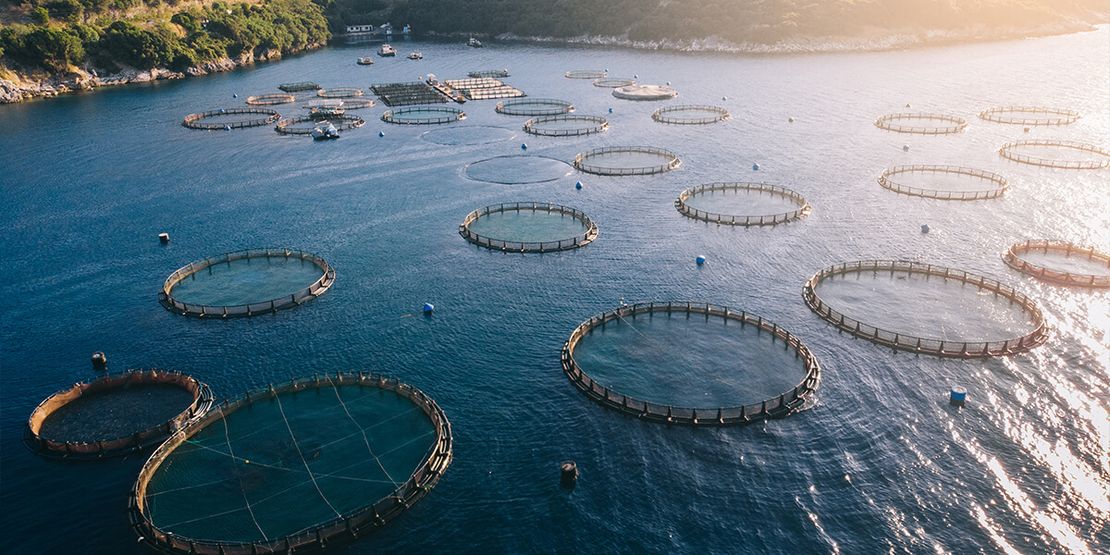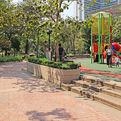Aquaculture Farming: Essential Terms and Definitions for Beginners (Part 2)
Abiotic Factors: Non-living environmental factors such as temperature, water quality, and salinity that impact the growth and health of shrimp.
Algal Bloom: Rapid growth of algae in a body of water, which can deplete oxygen levels and harm aquatic life.
Antibiotics: Medications used to treat bacterial infections in shrimp.
Aquaculture: The cultivation of aquatic plants and animals for human consumption.
Bacterial Disease: A type of illness caused by bacteria that affects the health of shrimp.
Biofloc Technology (BFT): A system that uses microorganisms to control water quality and reduce waste in shrimp ponds.
Carrying Capacity: The maximum number of shrimp that can be raised in a given area without causing environmental harm.
Chlorine: A chemical used to disinfect water in shrimp ponds.
Clarifier: A device that removes suspended solids and other pollutants from water.
Copepod: A tiny crustacean that is a common food source for shrimp.
Decapsulation: The removal of a shrimp’s protective exoskeleton.
Density: The number of shrimp per unit of water in a pond.
Diatomaceous Earth: A fine powder made from the fossilized remains of diatoms, used to filter water in shrimp ponds.
Disinfectant: A chemical used to kill pathogens in water and on surfaces.
Dissolved Oxygen: The amount of oxygen in water, which is critical for the survival of shrimp.
Effluent: Wastewater produced by shrimp farms.
Electro-fishing: The use of electrical current to stun and capture shrimp.
Exoskeleton: A hard outer shell that protects the body of a shrimp.
Feed: The food given to shrimp in aquaculture, typically a combination of dry pellets and live organisms.
Feed Conversion Ratio (FCR): The amount of feed needed to produce a unit of shrimp biomass.
Filter Feeder: A type of organism that feeds on small particles suspended in water.
Floating Net: A type of cage used to contain shrimp in open water.
Genetics: The traits and characteristics passed down from parents to offspring.
Hatchery: A facility where shrimp are raised from eggs to juveniles.
Intensive Farming: A type of aquaculture that uses high stocking densities and inputs of feed and water.
Juvenile Shrimp: Young shrimp that have reached the post-larval stage of development.
Larvae: The early stage of a shrimp’s life cycle.
Litigation: Legal action taken against a shrimp farm for environmental violations or other issues.
Maturation: The process of reaching sexual maturity in shrimp.
Metamorphosis: A change in form or structure during development.
Mortality: The rate of death among shrimp in a pond.
Nauplii: The earliest stage of a shrimp’s life cycle.
Nutrition: The balance of nutrients and energy in the diet of shrimp.
Organic Matter: Material of plant or animal origin in water.
Pathogens: Microorganisms that cause disease in shrimp.
Pellets: Dry, compacted feed that is fed to shrimp in aquaculture.
Ponds: A man-made body of water used for shrimp farming.
Rearing: The process of growing and raising shrimp to maturity.
Salinity: The concentration of salt in the water. Shrimp farming requires a specific level of salinity to ensure the proper growth and health of the shrimp.
Stocking Density: The number of shrimp in a pond, expressed as shrimp per unit area. The stocking density must be controlled to avoid overcrowding and disease.
Vaccination: The process of injecting a vaccine into shrimp to protect them from disease.
Water Exchange: The process of removing and replacing the water in a shrimp pond. Water exchange is important for maintaining proper water quality and temperature.
Water Quality: The physical, chemical, and biological properties of the water in a shrimp pond. The water quality must be maintained to ensure the health and growth of the shrimp.
Zooplankton: Microscopic organisms that serve as food for shrimp. Zooplankton is important for the growth and development of shrimp in a pond.
P: Pond - A man-made body of water used for shrimp farming.
Q: Quarantine - The process of isolating new shrimp stocks to prevent the spread of disease.
R: Recirculating aquaculture system (RAS) - A type of aquaculture system that filters and recycles water to minimize waste and conserve resources.
S: Shrimp - The main species farmed in aquaculture.
T: Total Dissolved Solids (TDS) - The amount of minerals, salts, and other substances dissolved in water that can affect water quality and shrimp health.
U: Upwelling - A natural phenomenon in which cold, nutrient-rich water rises from the ocean floor to the surface.
V: Vibrio - A type of bacteria commonly found in shrimp ponds and a common cause of shrimp disease.
W: Water exchange - The process of draining and refilling pond water to maintain water quality and prevent disease.
X: Xenobiotics - Chemical compounds or substances that are not naturally found in the environment and may have harmful effects on shrimp health and survival.
Y: Yellow Head Disease (YHD) - A shrimp disease caused by the Vibrio parahaemolyticus bacterium.
Z: Zooplankton - Tiny aquatic organisms that serve as a food source for shrimp in ponds.
Acute Hepatopancreatic Necrosis Disease (AHPND): A highly infectious and deadly shrimp disease caused by the bacterium Vibrio parahaemolyticus.
Adhesin: A protein or carbohydrate molecule that allows bacteria to attach to the surface of shrimp.
Amoebic Gill Disease (AGD): A shrimp disease caused by the parasite Neoparamoeba perurans, which infects the gills and impairs their function.
Antibiotic: A type of drug used to treat bacterial infections.
Bactericide: A substance that kills bacteria.
Bacterial Gill Disease (BGD): A shrimp disease caused by a bacterial infection of the gills.
Bacterial Vibriosis: A shrimp disease caused by the bacterium Vibrio, which can cause damage to the gills, digestive tract, and other organs.
Biofloc: A type of shrimp culture system that uses a combination of bacteria and microorganisms to control water quality.
Chemotherapy: The use of drugs to treat a disease, especially one caused by bacteria or other microorganisms.
Chloramphenicol: A type of antibiotic used to treat bacterial infections in shrimp.
Chitin: A type of carbohydrate found in the exoskeleton of shrimp and other crustaceans.
Chlorine: A chemical used as a disinfectant in shrimp aquaculture.
Coliform: A type of bacteria found in the digestive tract of animals, including shrimp.
Copper Sulfate: A chemical used as a disinfectant and algaecide in shrimp aquaculture.
Crustacean Pathogenic Mycobacterium (CPM): A type of bacterium that can cause disease in shrimp and other crustaceans.
Densovirus: A type of virus that can cause disease in shrimp.
Diatomaceous Earth: A type of sedimentary rock used as a filtration material in shrimp aquaculture.
Electron Microscopy: A type of microscopy that uses electrons to produce high-resolution images of cells and other structures.
Enteritis: An inflammation of the intestines, often caused by bacterial or viral infections.
Enzootic: A disease that is consistently present in a specific population of animals.
Epizootic: A disease that spreads rapidly through a population of animals.
Exopodite: A type of appendage found on the legs of shrimp and other crustaceans.
Feed: The food given to shrimp in aquaculture systems.
Feed Conversion Ratio (FCR): A measure of the efficiency of converting feed into shrimp biomass.
Filter Feeding: The process by which shrimp filter particles from the water for food.
Flocculant: A chemical used to remove suspended particles from water in shrimp aquaculture systems.
Formalin: A type of disinfectant used in shrimp aquaculture systems.
Frozen Shrimp: Shrimp that have been harvested, processed, and frozen for storage and transport.
Gills: The respiratory organs of shrimp and other aquatic animals.
Growth Promoters: Substances added to shrimp feed to improve growth and overall health.
Haemolymph: The fluid that circulates throughout the body of shrimp and
Haemolymphatic Nodules: A condition where small lumps appear on the shrimp’s body, usually as a result of a bacterial or viral infection.
Histophilosis: A disease caused by the bacterium Histophilus penaei, which affects the digestive tract and reproductive organs of shrimp.
HPWD (Heat-Preserving Water-Preserving Disease): A disease that is caused by the bacterium Photobacterium damselae subsp. damselae, which affects the gills and hindgut of shrimp, causing lethargy and death.
Infectious Hypodermal and Hematopoietic Necrosis (IHHN): A virus that causes yellow spots and ulcerations on the shrimp’s body, leading to death.
Infectious Myonecrosis Virus (IMNV): A virus that causes damage to the shrimp’s muscles, leading to death.
Luminous Bacterial Disease: A disease caused by the bacterium Vibrio harveyi, which affects the digestive tract of shrimp, causing them to emit a greenish glow.
Methylmercury Toxicity: A condition caused by the consumption of contaminated food, leading to the buildup of toxic levels of mercury in the shrimp’s body.
Nodavirus: A virus that causes white spots on the shrimp’s body, leading to death.
Parasitism: A disease caused by parasites such as copepods, isopods, and leeches that feed on the shrimp’s body, leading to death.
Perkinsosis: A disease caused by the parasite Perkinsus marinus, which affects the gills and digestive tract of shrimp, leading to death.
Peroxidase Deficiency: A condition where the shrimp is unable to produce a key enzyme, leading to a decrease in immunity and increased susceptibility to disease.
P: PAPA Syndrome - A shrimp disease caused by the bacterium Vibrio parahaemolyticus and characterized by skin damage, muscle necrosis, and digestive tract damage.
Q: Q Fever - A shrimp disease caused by the bacterium Coxiella burnetii and characterized by systemic symptoms such as abdominal pain, fever, and malaise.
R: Red Necrosis Syndrome - A shrimp disease caused by the bacterium Vibrio harveyi and characterized by red discoloration and necrosis of the shrimp’s body.
S: Summer Mortality Disease - A shrimp disease caused by multiple factors such as high water temperature, high density of shrimp, poor water quality, and stress from disease and overcrowding.
T: Taura Syndrome - A shrimp disease caused by the virus Taura Syndrome Virus (TSV) and characterized by stunted growth, shell deformities, and reduced survival rate.
U: Ulcerative Disease - A shrimp disease caused by the bacterium Vibrio owensii and characterized by necrotic lesions and ulcers on the shrimp’s body.
V: Vibriosis - A shrimp disease caused by the bacterium Vibrio spp. and characterized by skin damage, muscle necrosis, and digestive tract damage.
W: White Spot Syndrome Virus (WSSV) - A shrimp disease caused by the virus White Spot Syndrome Virus (WSSV) and characterized by white spots on the shrimp’s body and reduced survival rate.
X: Xanthomonas - A shrimp disease caused by the bacterium Xanthomonas spp. and characterized by skin damage, digestive tract damage, and reduced survival rate.
Y: Yellow Head Disease - A shrimp disease caused by the virus White Spot Syndrome Virus (WSSV) and characterized by yellow discoloration and necrosis of the shrimp’s head.
Z: Zonal Necrosis - A shrimp disease caused by the bacterium Vibrio penaeicida and characterized by discoloration and necrosis of the shrimp’s body in distinct zones.
P: Pathogen - A disease-causing organism that can infect and harm shrimp.
Q: Quorum Sensing - A process in which bacteria communicate and coordinate their behavior through chemical signaling.
R: Red Tide - A phenomenon that occurs when a large amount of harmful algae bloom, causing significant harm to marine life, including shrimp.
S: Septicemia - A severe bacterial infection that spreads throughout the shrimp's bloodstream, causing organ damage and death.
T: Taura Syndrome - A lethal shrimp disease that was first identified in the early 1990s in the Americas.
U: Uropodal Cuticle - The protective outer layer of a shrimp's tail.
V: Vibrio - A genus of bacteria that can cause various diseases in shrimp, including vibriosis and luminescent vibriosis.
W: White Spot Syndrome Virus (WSSV) - A highly contagious and deadly virus that affects shrimp, causing white spot lesions on their bodies.
X: X-Ray Fluorescence - A technique used to analyze the chemical composition of shrimp and detect the presence of disease-causing pathogens.
Y: Yellow Head Disease - A highly contagious and lethal virus that affects shrimp, causing yellow discoloration on their heads and bodies.
Z: Zoonosis - A disease that can be transmitted from animals to humans. Some shrimp diseases, such as vibriosis, have the potential to cause zoonosis.
—
AC Current: Alternating current that is commonly used in electric motors and electrical appliances.
Circuit Breaker: A safety device used to prevent electrical overloading by automatically switching off power to a circuit.
DC Current: Direct current that is used in battery-powered systems, solar panels, and in some industrial processes.
Ground: A conductor that is connected to the earth to protect against electrical shocks and ground faults.
Ground Fault Circuit Interrupter (GFCI): A safety device that interrupts electrical power when it detects an imbalance in the current between the hot and neutral wires.
Inverter: A device that converts DC current into AC current, allowing for use of AC powered devices in a DC powered system.
Load: The electrical power consumption of an appliance or system.
Panelboard: An electrical panel that contains the main breaker and circuit breakers for a building or system.
Power Supply: The source of electrical power for an appliance or system.
Voltage: The measure of electrical potential difference between two points, often measured in volts.
Wiring: The process of installing and connecting electrical conductors in a system.
Ampere: The unit of electric current, often used to measure the flow of electricity in a circuit.
Ohm: The unit of electrical resistance, used to measure the opposition of a material to the flow of electrical current.
Watt: The unit of power, used to measure the rate of energy transfer in an electrical system.
Waterproof Electrical Connectors: Special connectors designed to prevent water from entering electrical systems and causing damage or electrical shock
Recommended for you
Thailand Golf: Crystal Bay Golf Club in Pattaya
The Bear Team
The Bear Earth: An Intro to Innovating Sustainable Solutions for a Better World
The Bear Earth Team
Artificial Intelligence in Shrimp Farming: A New Era of Innovation
Riley Sinclair (Digital Aqua Bear)















